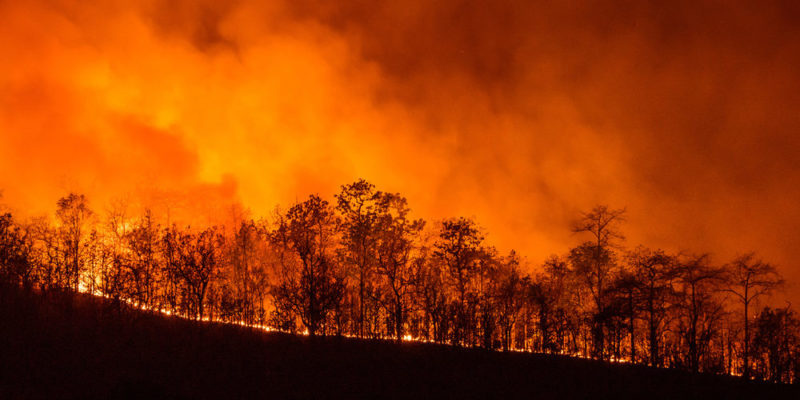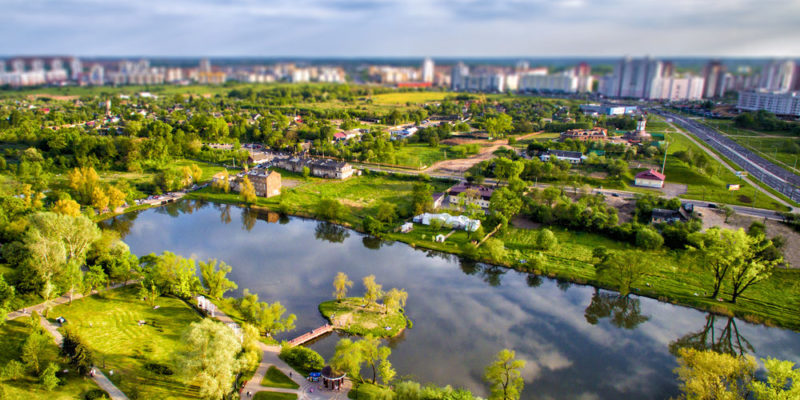We explain what deforestation is, what its causes are, and the consequences it entails. Also, its features and solutions.
What is deforestation?
Deforestation is the cutting down or destruction of trees in a forest or jungle . For the most part, deforestation is due to human action and has increased dramatically in the last 150 years.Deforestation is an ecological problem since first plant organisms are destroyed, secondly it destroys the ecosystem of the forest or jungle and this affects many species, and thirdly increasing favors pollution .
This problem has attracted the attention of governments and international organizations , which has now achieved that the rate of forest disappearance is half that of 1990. However, deforestation continues to be a problem, especially in developing countries where it is not there are protective laws for forest areas.
Causes of deforestation
 The causes of deforestation are multiple, some of them due to human action and others natural . For the most part, deforestation is caused by various economic activities of man.
The causes of deforestation are multiple, some of them due to human action and others natural . For the most part, deforestation is caused by various economic activities of man.In the first place, forests are cut down for space , that is, to use the forest floor for another purpose such as agriculture or the construction of houses or factories. On the other hand, trees can be cut to make use of their wood , for example in the manufacture of paper or to use it as fuel.
The main natural cause of deforestation are fires that are usually associated with human activity , both due to being the product of carelessness or due to deliberate action.
Loss of biodiversity
 One of the main consequences of deforestation is the loss of biodiversity . The impact of deforestation on the environment is profound and in some cases irreversible. A forest is an ecosystem and, therefore, by destroying it, hundreds or thousands of species that belonged to that ecosystem are expelled .
One of the main consequences of deforestation is the loss of biodiversity . The impact of deforestation on the environment is profound and in some cases irreversible. A forest is an ecosystem and, therefore, by destroying it, hundreds or thousands of species that belonged to that ecosystem are expelled .Some of them continue to develop in nearby ecosystems but due to the magnitude of deforestation today, many species lose their specific ecosystems and become extinct.
Once a species becomes extinct, it cannot be recovered. Therefore, this is an irreversible consequence of deforestation.
Air pollution
As part of their metabolism, the plants absorb carbon dioxide and give off oxygen , ie perform the opposite process that animals . In this way, forests oxygenate the air and at the same time remove carbon dioxide , which is toxic.When these forests are eliminated en masse, the planet loses one of its main mechanisms to counteract air pollution.
Carbon dioxide is one of the gases that favors the greenhouse effect , therefore, the cutting of forests has the consequence of climate change .
Desertification
 The vegetation of the forests functions as a protective and nutritive layer of the soils. In many cases, when this layer is removed by deforestation, the soil is exposed to wind erosion .
The vegetation of the forests functions as a protective and nutritive layer of the soils. In many cases, when this layer is removed by deforestation, the soil is exposed to wind erosion .In addition, the humidity of the soil and the air was also regulated by the vegetation and once the forests are eliminated, various territories suffer droughts or an excess of water due to irrigation for agriculture. In both cases, the soil loses its nutrients and becomes infertile.
Desertification is one of the most extreme consequences of deforestation.
Difference with forest degradation
Forest degradation is the reduction or destruction of some specific aspects of the forest , but not the forest as a whole.One cause of forest degradation is pests or disease outbreaks that affect only one species in the forest. Another form of degradation is the operation by the human being from a single resource of the forest, for example rubber extraction.
Although forest degradation is not as severe as deforestation , it also has negative effects on diversity and climate change.
Deforestation for agriculture
 It is a type of planned deforestation . It can be done by cutting down or burning trees.
It is a type of planned deforestation . It can be done by cutting down or burning trees.Although most of it is carried out on a small scale by small producers , the sum of these small deforestation represents a huge area. In addition, due to the wear of the soil, its usefulness is very limited in time .
Industrial deforestation
 Industrial deforestation is the logging that is carried out to use wood as a raw material . Wood is used in all kinds of products, from the construction of houses and furniture to the production of paper.
Industrial deforestation is the logging that is carried out to use wood as a raw material . Wood is used in all kinds of products, from the construction of houses and furniture to the production of paper.However, some countries, such as Sweden, have managed to curb industrial deforestation by enacting forest laws that oblige companies to reforest cleared areas.
This is another type of planned deforestation.
Deforestation by urbanization
 This type of deforestation occurs mainly in countries with a high population concentration , where more and more land is required to satisfy the demand for housing complexes.
This type of deforestation occurs mainly in countries with a high population concentration , where more and more land is required to satisfy the demand for housing complexes.However, it also occurs on a small scale in sparsely populated areas, for example for the construction of hotels in wooded areas or jungles .
The impact of this type of deforestation can be multiplied if proper waste treatment is not done to prevent contamination of the surrounding soils and waters .
Involuntary deforestation
In addition to human action, forests are also threatened by natural causes. The most frequent cause of involuntary deforestation is fire . However, many unintentional fires are caused by the carelessness of man.Another unintended cause of deforestation is pests , which in some cases can simply cause forest degradation, but in other cases can destroy them.
Possible solutions for deforestation
 The most effective solutions have been found in a state intervention that, on the one hand, establishes protective legislation for forests and, on the other hand, informs the population about the importance of their conservation.
The most effective solutions have been found in a state intervention that, on the one hand, establishes protective legislation for forests and, on the other hand, informs the population about the importance of their conservation.In some places in Europe and America, reforestation programs are being implemented, that is, replanting trees in the felled areas.
However, these programs have been more effective when the State imposes the task of reforestation on companies that exploit the forests.
The recycling of wood and paper also reduces logging, as well as the use of alternatives for making paper such as sugar cane.
MA student of the TransAtlantic Masters program at UNC-Chapel Hill. Political Science with a focus on European Studies. Expressed ideas are open to revision. He not only covers Technical articles but also has skills in the fields of SEO, graphics, web development and coding. .
Leave a reply
Your email address will not be published. Required fields are marked *Recent post

Sport: What Is It, Types, Risks, Features, Characteristics and Examples
September 23, 2021

Dogs: Emergence, Features, Characteristics, Feeding and Breeds
September 24, 2021

Story: Definition, Elements, Structure, Features and Characteristics
September 24, 2021

Essay: Definition, Structure, Features, Characteristics, How to Do It
September 24, 2021
